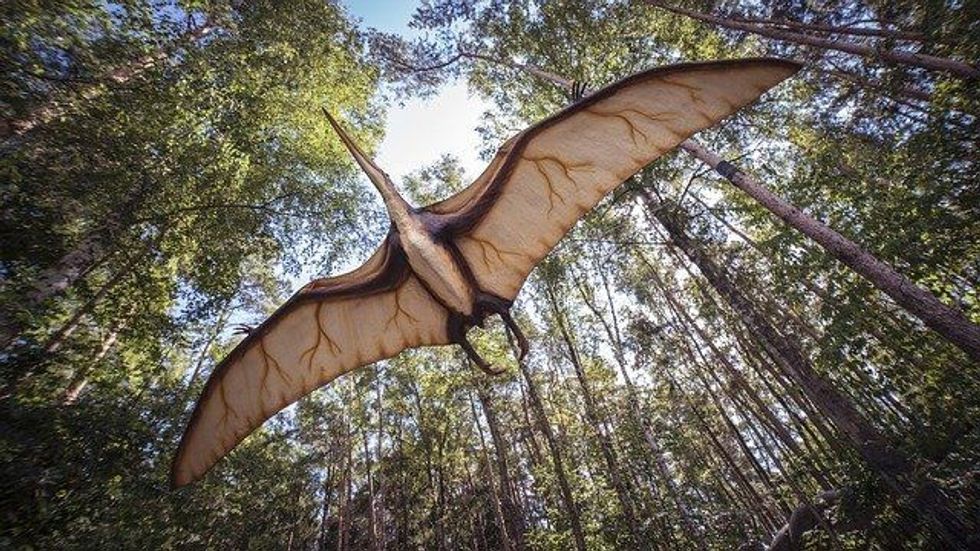Tucuxis are one of the mysterious dolphin species found mostly in the Amazon River basin and the Orinoco river basin. This species looks eerily similar to the bottlenose dolphins but are placed in a different genus.
The sleek blue or pearl-gray back, along with its light belly, gives the tucuxi an amazing look. People in Peru call this dolphin bufeo gris or bufeo negro because of its gray color.
Even though it looks similar to the bottlenose species, this is a smaller variant. It also likes to inhabit freshwater areas compared to the marine habitats preferred by the former species.
Its uncommon name comes from the Tupi language, which is known as tuchuchi-ana. Tucuxis do share its natural habitats with the Amazon River dolphin or boto.
Still, it isn't regarded as a true river dolphin and is classified in the family Delphinidae, which mainly contains oceanic dolphins. Formerly, the Guiana dolphin (Sotalia guianensis) was grouped with this species but has now been separated. Because of development going on in the Amazon basin, accidental fishing gear catches and the rising pollution, their population is declining.
Want to know more about this species? Keep reading to learn interesting tucuxi facts! Also, search the articles on black dolphins facts and Ganges River dolphins facts to know about dolphin species.
Tucuxi Interesting Facts
What type of animal is a tucuxi?
The tucuxi (Sotalia fluviatilis) is a type of small South American dolphin species that lives in South America.
What class of animal does a tucuxi belong to?
Tucuxis belong to the class Mammalia, of the family Delphinidae, and to the genus Sotalia.
How many tucuxis are there in the world?
The population of the South American tucuxi is still Data Deficient, but it has been known that the population has been on the decline in its natural habitat. They are entered with an Endangered status by IUCN Red List, which means the population must be very limited.
Where does a tucuxi live?
The tucuxi is endemic to South America, where it is mostly found in the Amazon River basin and Orinoco river basin. However, there is a subspecies of the tucuxi, Sotalia fluviatilis guianensis, that live in the coastal waters of Brazil.
The marine tucuxi subspecies mainly dwell in the waters of the Atlantic Ocean. Tucuxis shares their habitat with the Amazon River dolphins.
What is a tucuxi's habitat?
Tucuxis mainly inhabit the Amazon and Orinoco River basins because of the abundance of food in the low water, and these dolphins don't have to spend much time looking for food. These dolphins can often be seen in mud banks and low-lying areas of the rivers in larger groups.
Some populations of the tucuxi can also be found in the area where the Amazon river meets the Atlantic ocean, but most of the dolphins prefer to live in freshwater areas.
Who do tucuxi live with?
Tucuxis are known for living in small groups of 10 - 15 individuals, which mainly consist of the mother and calves. Larger groups of 40 individuals can also be seen, and these groups have coordinated hunting techniques.
Tucuxis usually travel in a group of six individuals. Apart from the whistle calls, the dolphins are also known for doing flips, leaps, summersaults, and rolls to keep up with the group members.
How long does a tucuxi live?
The average life span range of a tucuxi is around 35 years in the wild habitat. This mammal does not have a long life in captivity.
How do they reproduce?
A whole lot is not known about the reproduction process of this mammal. However, scientists believe that females perform polyandry where a single female mates with multiple males in a single breeding season.
The breeding season for this coastal dolphin might exist from summer to early summer. As a mammal, the gestation period is long, with an average of 10 - 12 months, and it takes about six years for a young dolphin to reach sexual maturity.
Females usually give birth to one calf in a breeding season.
Not much is known about the parental care of tucuxis except the whistling call made by the mothers to let the calves know about food. Like other mammals, it is likely that the females do nurse the calves until it is ready to wean.
What is their conservation status?
According to the International Union for Conservation of Nature (IUCN) Red List, the tucuxis are currently classified as Endangered. The population of the tucuxi is still Data Deficient.
However, its population has been rapidly declining in the last few years, mainly because of dolphin-human conflict. One of the concerns for this species has been the introduction of mercury in its natural habitat due to gold mining.
A problem with keeping tucuxis is that the species don't do well when kept in captivity. In the Convention on the Conservation of Migratory Species of Wild Animals (CMS), tucuxis are present in Appendix II.
Tucuxi Fun Facts
What do tucuxi look like?
The riverine tucuxi look quite similar to bottlenose dolphins, but it is a little smaller. Tucuxis are differentiated because of their smaller and shorter beak with white tipping. The dorsal side of this species has a blue or pearl gray color, while the ventral surface may have a white or pink color.
A triangular shape is seen in the dorsal fin, and it may bend towards the caudal fin. On its side, there are broad flippers.
Around 28 - 35 teeth are seen in adults. Moreover, no sexual dimorphism is seen between males and females of this species. The riverine tucuxis can be smaller than their marine variants.

*This is a representative photo of a bottlenose dolphin that looks similar to the tucuxi dolphin. If you have an image of the tucuxi, please let us know at hello@kidadl.com.
How cute are they?
The small size of the riverine tucuxi gives it a cute and adorable appearance.
How do they communicate?
Just like other dolphins, the tucuxi is also known for making different calls like whistles and clicks. As a small species of dolphins, the tucuxi is known for communicating in high pitch sounds and whistles.
Tucuxis also can echolocate its prey and predators, just like whales. Even though the vision of a riverine tucuxi is not as great as other freshwater dolphins, it is definitely better than other marine dolphin species.
How big is a tucuxi?
The average size of the tucuxi is around 33.8-81.1 in (86-206 cm). Compared to the tucuxi, the striped dolphin reaches an average size of 64.4-102.3 in (163.5-259.8 cm), making it slightly larger than the river dolphin.
How fast can a tucuxi swim?
Not much is known about the swimming speed of the tucuxi. However, this dolphin can leap at a length of about 47.2 in (120 cm) above the surface of the water.
How much does a tucuxi weigh?
The average weight range of the tucuxi is around 121.1 lb (55 kg).
What are the male and female names of the species?
Like other dolphin species, the male is called a bull, while the female is called a cow.
What would you call a baby tucuxi?
A baby tucuxi is called a calf.
What do they eat?
Tucuxis (Sotalia fluviatilis) are carnivorous in nature and have an affinity towards marine ray-finned fishes. The diet may also include octopuses and squids, along with other fishes. Riverine tucuxis may visit confluence areas of rivers and oceans, as the plankton growth invites ray-finned fishes. Krill and crustaceans are also eaten included in their diet.
Are they dangerous?
No, tucuxis are highly intelligent marine mammals who seldom hurt humans. However, it does have a keen prey drive that it uses to catch prey.
Would they make a good pet?
As an endangered species of dolphins, it isn't legal to keep a marine tucuxi as your pet. It's also disheartening that this species can't be seen in zoos.
Did you know...
The pronunciation of tucuxi is too-koo-shee.
After swimming for a while, the tucuxi dolphin (Sotalia fluviatilis) can spend 5 to 85 seconds above the surface of the water to breathe.
Tucuxis are also known as gray dolphin.
Indigenous people prepare a burial for a marine tucuxi if they find one that has beached or died in the water. However, some people do hunt tucuxis for meat as well as for extracting oil. Interestingly, there is a local belief that the eyes and genital organs of tucuxis can be used as aphrodisiacs.
Barnacles are commonly found on tucuxis, but most of them aren't parasitic in nature.
Apart from humans, tucuxis do not have any other known predators.
What are the 5 species of river dolphins?
The five species of river dolphins are Ganga, Amazon, Indus, Irrawaddy, and Tucuxi variants. There is another variant known as the Bolivian river dolphin living in the Bolivian Amazon. All of these species face a threatened life mainly because of human-dolphin conflict. Some other river dolphins, like the Guianian river dolphins, are also known.
Why is the tucuxi endangered?
According to the World Wide Fund for Nature (WWF), the tucuxi is endangered because of the continuous development seen in the Amazon River Basin. Fragmentation of its breeding range has also caused a hindrance in mating.
The depleting number of prey fish also, has made food scarce for this species. Moreover, the tucuxi is often caught and killed as an accidental bycatch while fishing as it gets caught in fishing gear.
Similar to the tucuxi, the Amazon basin also contains the Amazon river dolphin, also known as the pink dolphins. These species that live in the Amazon River basin and the Orinoco river are currently endangered because of the rising human populations.
The constant river traffic and increased pollution have led to a dip in the dolphin population. Humans also use the pink dolphin in an inhuman way as bait in mota catfish fishery.
Here at Kidadl, we have carefully created lots of interesting family-friendly animal facts for everyone to discover! For more relatable content, check out these feist dog facts or kowari facts pages.
You can even occupy yourself at home by coloring in one of our free printable tucuxi coloring pages.
*The main image is a representative photo of a bottlenose dolphin that looks similar to the tucuxi dolphin. If you have an image of the tucuxi, please let us know at hello@kidadl.com.










